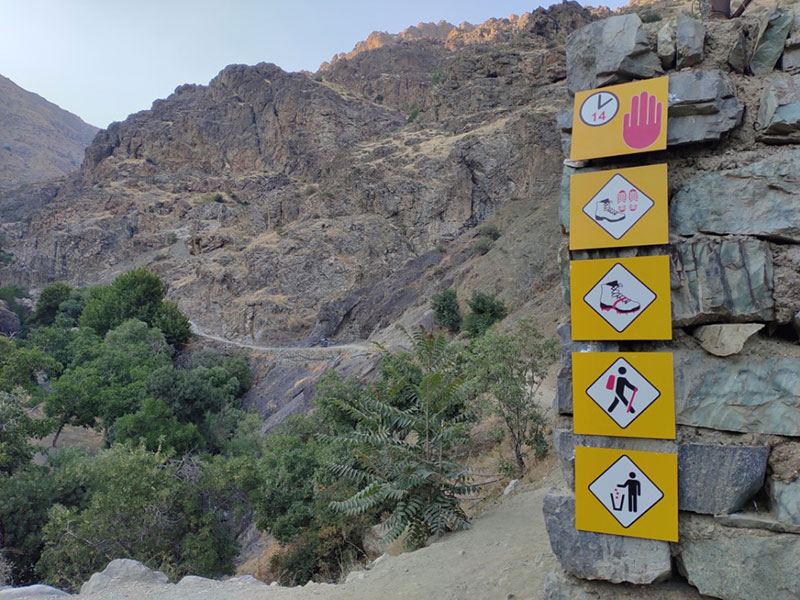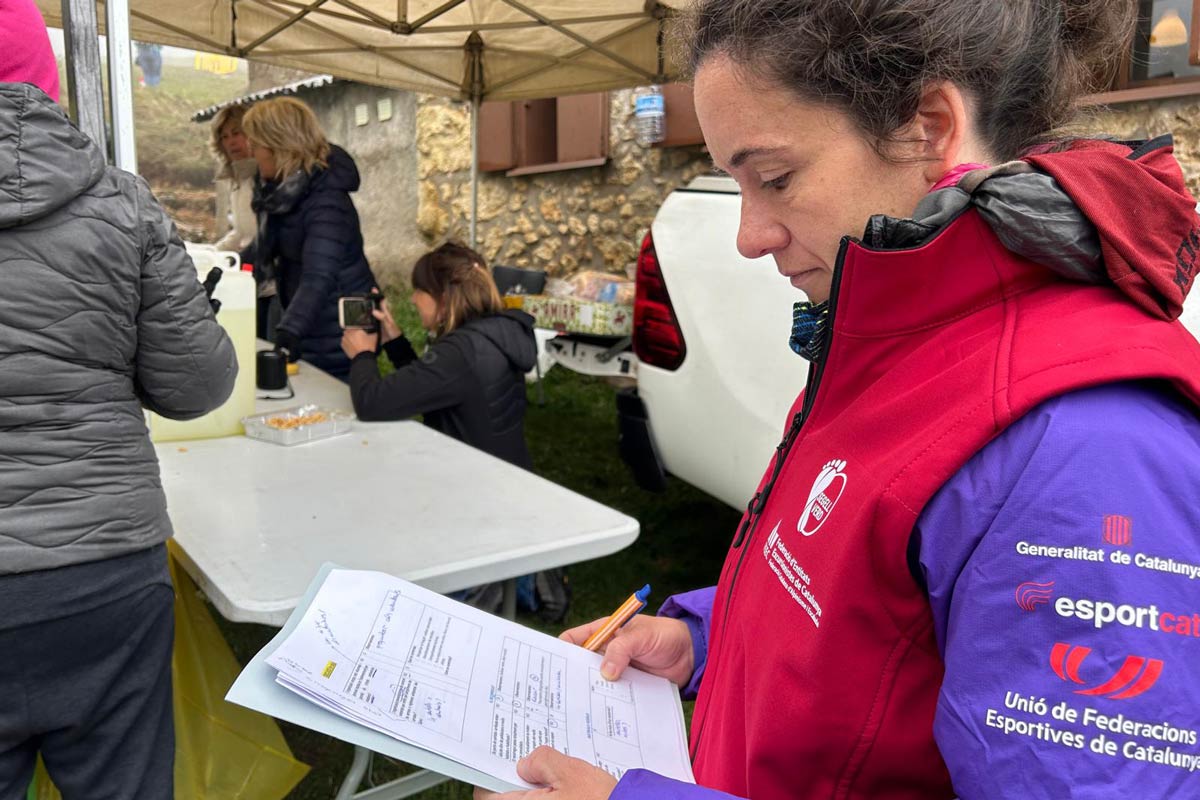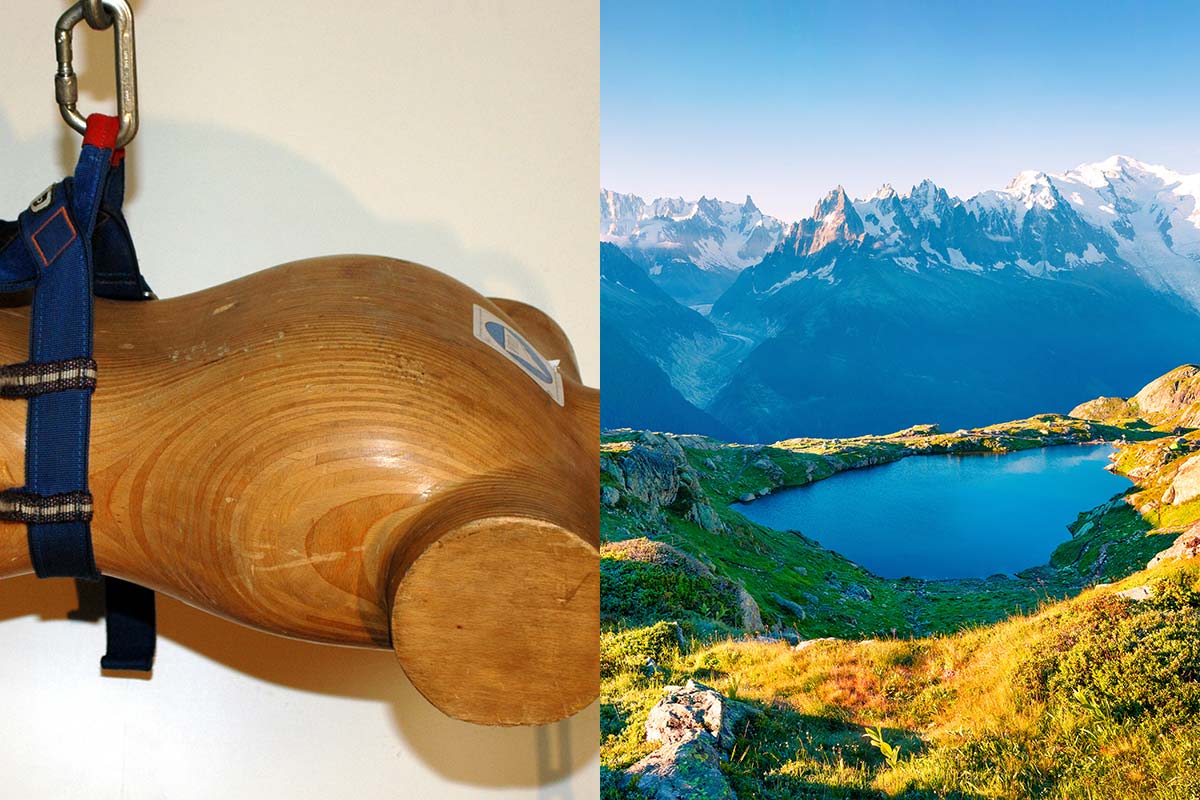OVERVIEW
Among the many factors affecting the destruction of mountain areas in Iran are mass tourism, noise pollution, implementing destructive tours of the environment such as picking medicinal plants, that happen to be endangered, and ambiguity in the laws of protecting the mountain environment, only to name a few. The Green Mountain Route project of the I.R. Iran Mountaineering & Sport Federation (IMSCF) gathered experts from various fields to determine a suitable route for the future.
Vision, goals and objectives
Humans have learned well over time how to live and survive in nature, but with the onset of urban life, man quickly moved away from nature. Now, after centuries and human ignorance, the earth is severely damaged and the pattern of life needs to be reconsidered for the survival of the earth.
Increasing the presence of people and hiking in nature has result in widespread entry into mountainous and highlands. This unbridled entry, in addition to exceeding the environmental capacity of these areas, but also the lack of a written and implemented model and instructions has led to the opening of new routes. The communities of the Iranian plateau have always been present in nature and mountains due to the arid and semi-arid climate and the nomadic way of life. The presence of people and their entry into the natural environment and mountains originates from their culture and traditions towards nature. Among the many factors affecting the destruction of the mountain are the following:
- Extensive presence of people in the mountain environment
- Creating noise that leads to fear of wildlife in the environment and declining habitat quality.
- Implementing wrong and destructive tours of the environment, such as the Festival of Medicinal Plants in Iran (picking plants with medicinal and medicinal properties), which has become common and widespread today due to people turning to healthy and organic life.
- Ambiguity in the laws of protection of mountainous areas
- Lack of instructions in the field of managing hiking and mountaineering routes
- Lack of executive management in national parks and protected areas
- Multiple organisations in charge of mountaineering activities such as: Environmental Protection Organisation, Ministry of Cultural Heritage, Handicrafts and Tourism, Mountaineering Federation, organisations affiliated to the Ministry of Interior
The Mountaineering Federation invited a group of environmental and mountaineering experts such as geomorphology, meteorology and climatology to cooperate and provide preventive solutions to avoid the destruction of nature. After holding several meetings, the members emphasised that in order to preserve biodiversity and minimise the amount of damage to the environment, a suitable route called “Green Mountain Route” should be determined, which is consistent with the sustainable development of the mountain environment in the long time.
An approach to nature sustainability the project should serve as a model to organise mountaineering trails and nature tours to prevent further destruction of Iran’s mountain ecosystems, introduction of wildlife habitats, plant habitats, natural and human attractions.
Expected implementation and outcomes
Expected Results:
- Managing the traffic of people to mountainous areas according to the environmental capacities
- Increasing the number of trained people entering the mountains with expert guides
- Identifying the potentials of mountaineering trails and mountaineering routes (capacity measurement)
- Lack of development of new trail and routes in sensitive habitats and habitats of sensitive areas
- Conservation of biodiversity (endangered species, endemic, relic, rare)
- Protecting the intangible heritage of local communities
- Empowerment and awareness of local communities
- Participation and ownership of local stakeholders
- Preventing off-road
It took six months for a team of eight experts in meteorology, climatology, geomorphology, social sciences, mountaineering, environment, and landscape design to develop a general guideline for identifying and designing a green route. The main purpose of the “Green Mountain Route” is to select and determine a special route to climb the mountain peak with respect to reducing environmental consequences and increasing safety.
To carry out the pilot project, the highest mountain of Gilan province, Sumamous with a height of 3703 meters a.s.l, located in the south of the Caspian Sea in the Alborz Mountains was selected. The considerable height and the presence of ancient forests and Ice Age relics (Hyrcanian forests) on its slopes were the two main reasons for choosing Mount Sumamous.
Three main groups were involved in the implementation phase of the Green Mountain Route:
- Iranian Mountaineering and Climbing Federation with provincial and city subdivisions
- Mountain environment experts and landscape and route design
- Managers and local community.
In the implementation phase, with the presence of a research group and a group of climbers, all the climbing routes to Sumamous Mountain were identified and after evaluation, five major climbing routes were surveyed. Following the guidelines of the Green Route, the northern route of Sumamous Mountain (Jurdasht village route) was selected as the best route. With the presence of a team of route design experts with the help of the local community, signage, warning and interpretation boards were installed in accordance with all the principles provided in the procedure. This was done in 90 days and the project was inaugurated in September 2016.
The distinguishing feature of the design
- Intangible education of the local community about the use of appropriate and environmentally friendly tools in the mountains
- Awareness and information to mountain communities, especially in the Alborz mountains
- Successful implementation of a mountain environment plan and coordination between government departments and the private sector to cooperate and remove various obstacles such as financial and legal barriers.
- Accompanying and face-to-face participation of experts preparing the route guide with local stakeholders
- Implementing an environmental plan while generating revenue and increasing the economic power of the local community
Climbing, mountaineering or outdoor sport focus
Today, in the global ranking, the tourism industry is one of the most important industries in the cultural, social and economic contexts, which has developed rapidly in recent years and has become one of the largest sources of income in the world. Experts and international organisations have divided tourism into cultural, historical, religious, nomadic, commercial, health, adventure-sport, nature, and geotourism according to different criteria. Due to the nature of the mountains, part of the nature tourism and geotourism activities are done in mountainous areas. The main purpose is to provide principles and strategies for the sustainability of mountain landscapes and their development in the form of physical and functional development. Protection of natural heritage, strengthening and promotion of mountain tourism and creating a suitable environment for a variety of recreational – tourism activities and research are among the goals of designing such environments. This project has been done with the aim of organising and managing mountaineering and suitable mountaineering trails.
Therefore, the emphasis of the project is on the issue of mountains and outdoor sports and activities, including nature-oriented tourism and mountaineering. In fact, this is an environmental project designed to enhance the physical and mental capacity of people to live long, healthy lives and maintain a natural environment. Despite the efforts and actions taken by the IMSCF, mountain tourism in Iran has had negative consequences for mountainous areas. One of these harms due to the large presence of tourists in mountainous areas in most parts of the country is the development of abundant sanctuaries regardless of environmental criteria. The development of new routes and non-use of existing routes has led to the development of numerous dirt routes and soil erosion in mountainous areas. Some of these routes, regardless of the protected areas in the mountains, have created negative conditions for wildlife. In addition to combining environmental conditions and outdoor sports, environmental values and the safety of climbers have been considered in the designed trails.
Best practices in mountaineering and mountain-based sports for mountain protection
Tourism is centered on the presence of nature for a period of time that has spread all over the world and every day we see the emergence of new sub-branches in various nature-related sports, including mountaineering.
The increasing expansion of urban communities and the spread of information through the Internet and cyberspace in this period has made people better understand each other. It also allows us to see and touch how other people from other places in the world reside, live, work, play, and what their interests are, which is the strongest motivation to move to new and unknown pristine mountain places. Without a doubt, the dissemination and promotion of information, regardless of education, infrastructure, monitoring, support and protection, is a very dangerous task that will occur in different societies in different ways. In advanced societies, these harms are manifested in the form of amendments to regulations, installation of signboards, information in public places, and to the public, but in developing countries, which are indifferent to the basics, they are seen as complete destruction of nature and the environment. The method of the Green Mountain Path, as the first provider of construction patterns and treatment of mountainous nature in Iran, tries to expand human affection for nature as much as possible so that future generations can use and protect it. If the provisions of this policy are used and implemented correctly, in the not-too-distant future, mountainous nature will have the opportunity to continue its life.
For example, suppose a mountain that has eight ascent routes to reach the top of the mountain is disturbed and destroyed by all kinds of environmental damage and so on. Now, let’s assume that only one of the eight routes is allowed to pass, and that is with an official permit. Naturally, all seven routes, or better to say 85% of the mountains, will survive in their natural peace and quiet and will have the opportunity to rebuild themselves.
To discover more about the UIAA Mountain Protection Award please click here.



